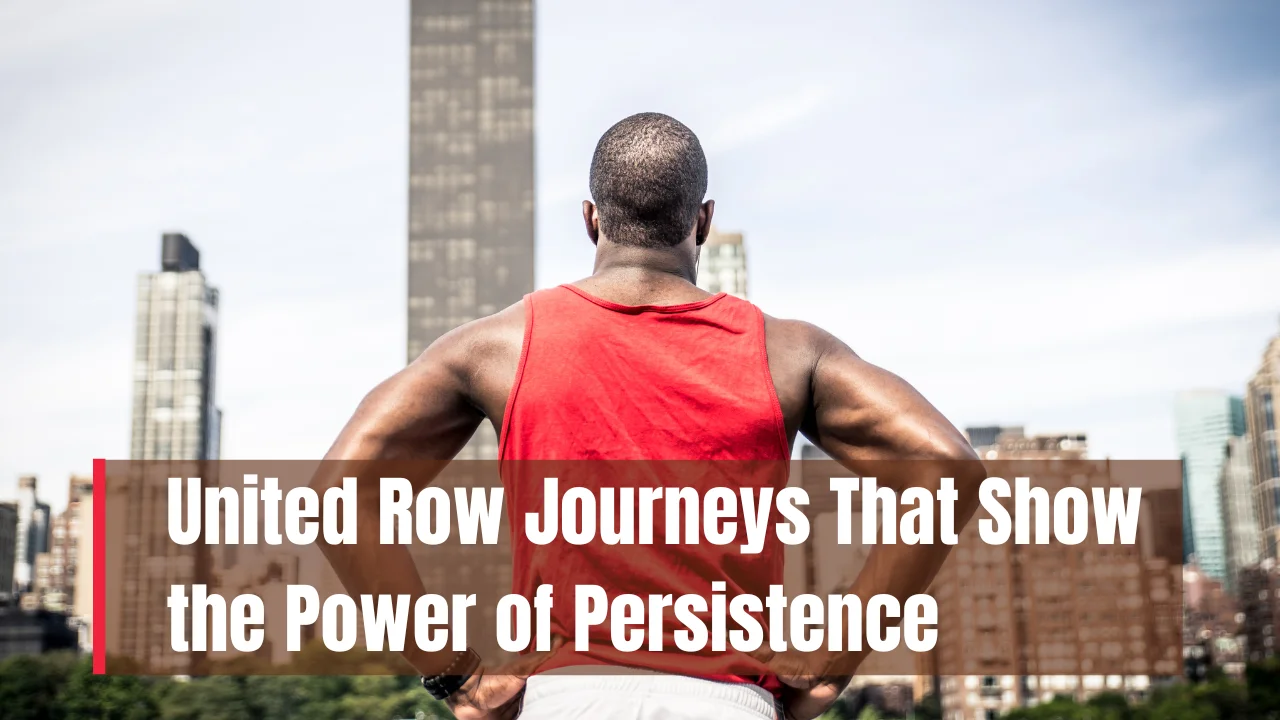Visual Journaling: Visual journaling has quietly emerged as one of the most impactful tools in modern sports training. While traditionally, athletes and coaches relied on performance data, training logs, and video analysis, today there is a growing focus on the internal landscape—what athletes feel before, during, and after practice or competition. For United Row, this tool is becoming central to personal growth and team cohesion.
In this article, we’ll explore how United Row has woven visual journaling into its athletic program, not just to enhance performance but to deepen reflection, emotional clarity, and team culture. We’ll break down its use, benefits, daily application, and the ripple effect it’s having on mental wellness and focus.
The Role of Visual Journaling in Athlete Development
Visual journaling is more than a creative outlet—it’s a method that enables athletes to process experiences, visualize progress, and connect with their inner voice. For United Row, this practice goes far beyond doodles or sketches. It’s about making the invisible visible—putting emotions, lessons, and performance insights into a form that can be seen, revisited, and shared.
Incorporating visual journaling helps athletes unlock self-awareness, reduce performance anxiety, and develop mental resilience. It bridges the gap between physical training and psychological growth, offering a daily practice that empowers athletes to own their mental journey just as much as their physical one.
Overview Table: How Visual Journaling Enhances Athletic Reflection
| Key Aspect | Explanation |
| Mental clarity | Helps athletes organize and understand their emotional and mental state |
| Self-awareness | Reveals patterns in performance and mindset over time |
| Goal visualization | Encourages athletes to visually set and track personal and team goals |
| Stress management | Offers a private outlet to manage pressure and pre-competition anxiety |
| Communication tool | Builds openness and trust through shared journaling sessions |
| Team connection | Encourages empathy and understanding among teammates |
| Focus improvement | Supports mindfulness and staying present in training and competition |
| Performance tracking | Visual symbols and charts track progress in a more intuitive way |
What is Visual Journaling?
Visual journaling is a form of self-reflection that blends imagery with short written insights to express internal experiences. Athletes may use color, shapes, symbols, and even flow diagrams to reflect on their training, emotions, or race day performances. It’s not about artistic ability—it’s about honesty and clarity.
For United Row, this tool plays a key role in mental training. Athletes are encouraged to journal regularly, especially after high-pressure moments. Instead of long paragraphs, they often represent their energy levels with color bars, or their focus zones with spirals or circles. It’s a highly personal method that keeps them grounded and engaged in their own development.
How United Row Incorporates Visual Journaling
At United Row, visual journaling is embedded into the team’s culture. Each athlete maintains their own journal, which they use during warm-ups, cooldowns, or downtime. Coaches offer gentle prompts, like “What did your stroke feel like today?” or “What mindset helped you stay calm under pressure?”
Importantly, this is not a performance review—it’s a personal reflection tool. Athletes aren’t required to share unless they want to. Yet, once a week, the team hosts voluntary “reflection circles” where athletes can showcase a journal entry. These moments have sparked powerful conversations about mental fatigue, motivation, and resilience, strengthening the team’s emotional intelligence and unity.
Mental Benefits for Athletes
One of the most profound impacts of visual journaling is its role in promoting mental well-being. Rowing, like many endurance sports, demands both physical stamina and mental toughness. Through journaling, athletes learn to track their emotional patterns, recognize triggers, and celebrate small wins.
Secondary keywords like emotional awareness, resilience, and performance mindset are naturally linked here. Journaling gives athletes the space to reset after tough sessions, explore inner doubts, and build self-compassion. As stress and performance anxiety decrease, confidence and clarity tend to rise. For many at United Row, the journal becomes a trusted companion during both peak seasons and recovery periods.
Boosting Self-Awareness and Goal Setting
Visual journaling also enhances self-awareness by making internal states visible. Athletes might draw their energy dips across the week or illustrate a pre-race breathing routine that keeps them centered. These visual cues become mental anchors.
Goal setting becomes more dynamic, too. Instead of writing “Get faster” or “Improve endurance,” athletes might sketch a hill to symbolize growth, with steps representing the small efforts needed daily. This use of visual goal tracking, habit mapping, and progress illustration makes long-term goals feel achievable and present.
Over time, patterns emerge—maybe stress spikes before team races, or motivation soars after certain drills. These insights guide smarter training decisions and support holistic development.
Team Building Through Shared Reflection
What makes United Row’s approach unique is how visual journaling fuels not just individual growth but team connection. Shared journaling moments, whether in pairs or small groups, create safe spaces for vulnerability. An athlete sharing a sketch about a tough week often finds empathy from a teammate who felt the same.
This open dialogue builds a culture of mutual respect. Coaches, too, gain insight into athlete needs—when someone’s drawing consistently shows fatigue or pressure, it opens a conversation before burnout sets in.
In a sport that often prizes silence and stoicism, this practice encourages athletes to be whole people—not just performers. The result is a team that listens, supports, and thrives together.
2 Key Practices in Visual Journaling at United Row
- Emotion Mapping Before Practice
Athletes choose a color or shape to reflect their current emotional state. This sets a baseline for how they’re entering the session and allows coaches to adapt training if needed. - Post-Race Reflection Diagrams
After races or time trials, athletes sketch a visual timeline of their experience—from start-line nerves to mid-race confidence dips or end-of-race fatigue. These images help them process without overthinking or getting stuck in judgment.
Why Other Teams Should Try Visual Journaling
The beauty of visual journaling lies in its adaptability. It’s inexpensive, flexible, and scalable across sports and age groups. Whether you’re coaching elite athletes or working with a youth team, introducing this tool can enhance emotional intelligence, deepen focus, and improve communication.
You don’t need elaborate training to start. Just a notebook, a few colored pens, and a quiet moment. Over time, the benefits compound—athletes become more reflective, more self-aware, and more connected to their performance journey.
Other teams might begin with once-a-week sessions, gradually building up to more frequent use. Integrating secondary elements like mental recovery, self-reflection habits, and emotional check-ins helps embed the practice into everyday training.
Final Thoughts
United Row’s use of visual journaling shows that performance isn’t just measured in seconds and stats. It’s also seen in emotional resilience, self-understanding, and the strength of a team that truly knows each other.
This practice offers a rare blend of introspection and connection, allowing athletes to grow in all directions—not just physically. Whether you’re in rowing, running, or any competitive sport, visual journaling could be the edge you’ve been looking for.
Try it out. Start small. Sketch your mindset today. You might just uncover something powerful.
FAQs
1. What is visual journaling in sports?
It’s a form of journaling where athletes use drawings, colors, and symbols to reflect on their emotions, goals, and experiences.
2. Do you need to be artistic to do visual journaling?
Not at all. It’s about expression, not art. Stick figures and simple shapes are more than enough.
3. How often should athletes do visual journaling?
Even journaling once or twice a week can offer strong mental and emotional benefits.
4. Can visual journaling help reduce performance anxiety?
Yes, by allowing athletes to process and externalize their stress in a non-verbal, low-pressure way.
5. Is visual journaling suitable for team sports?
Absolutely. It helps teams bond, communicate better, and understand one another on a deeper level.












